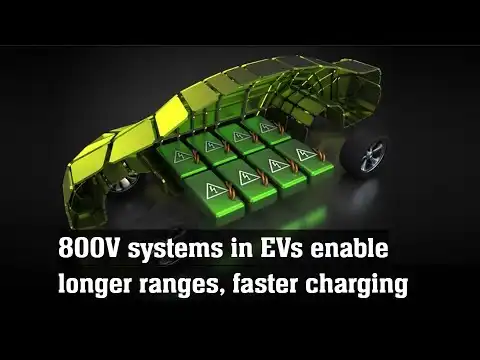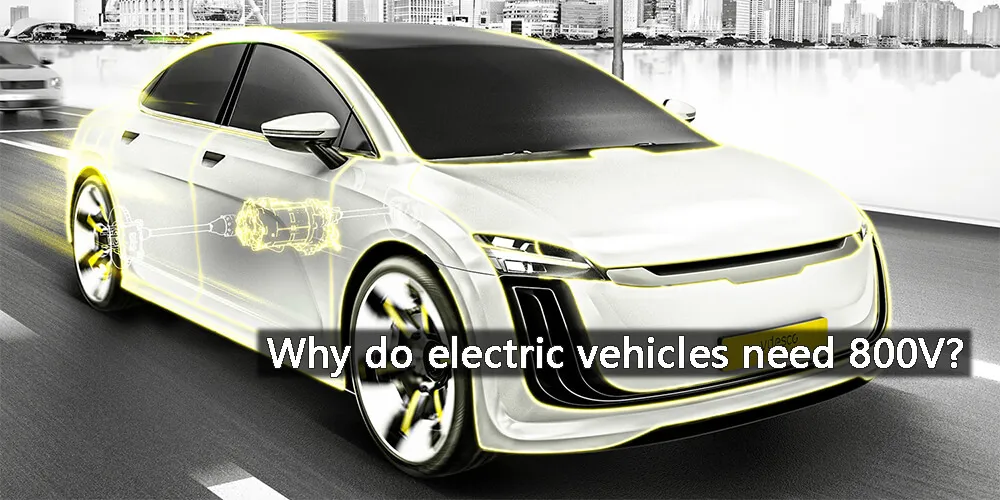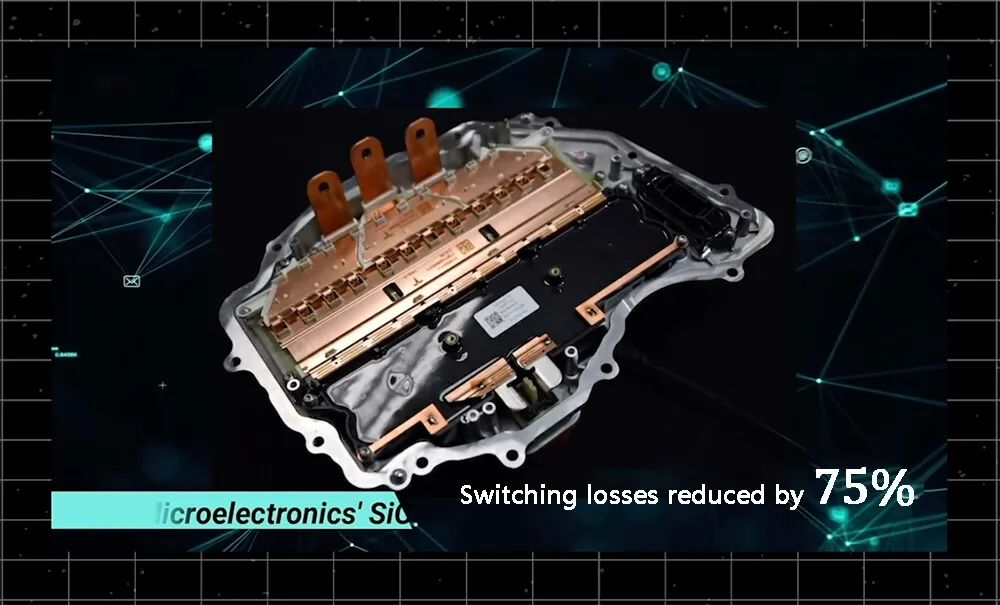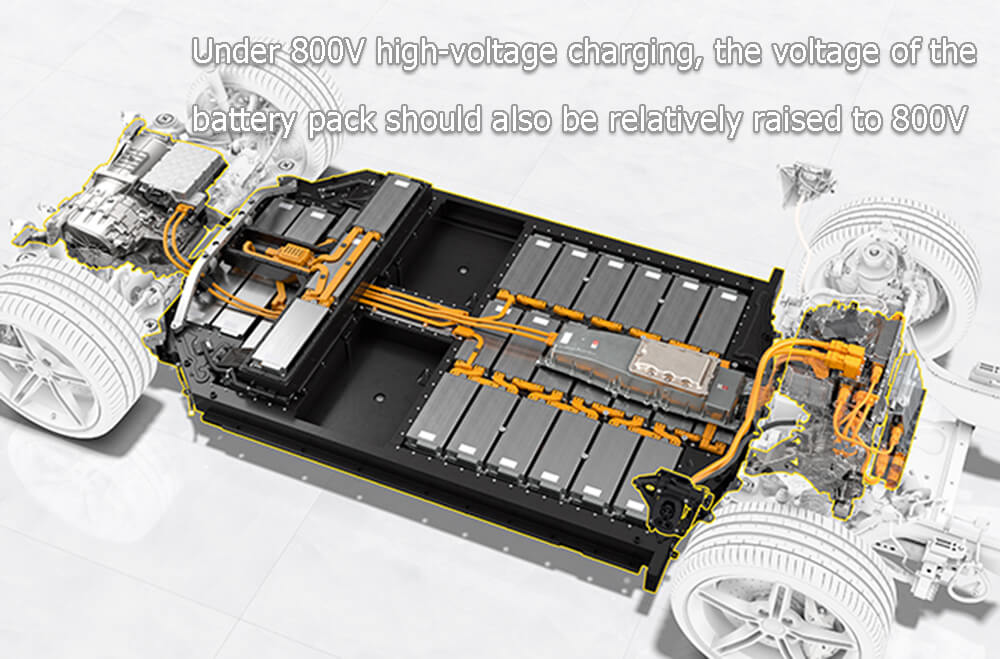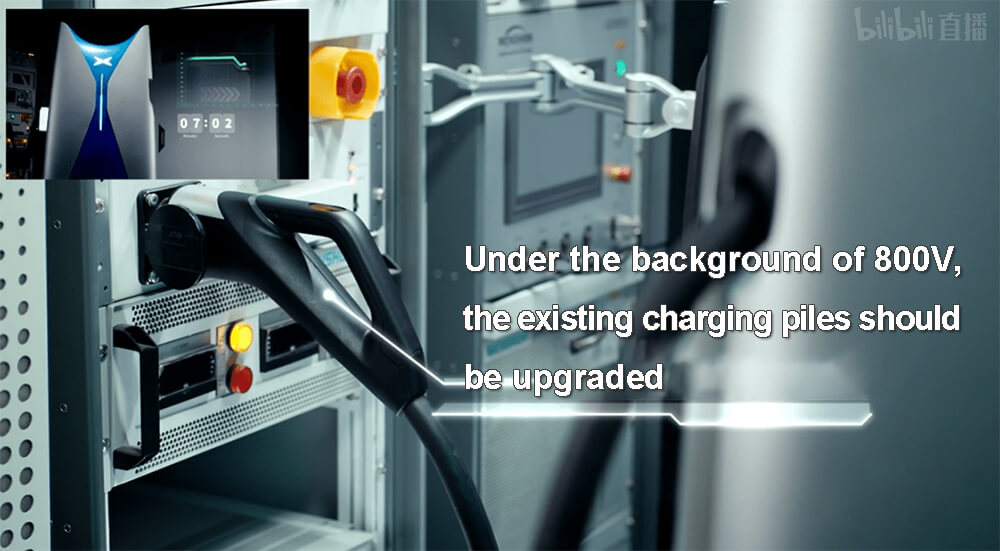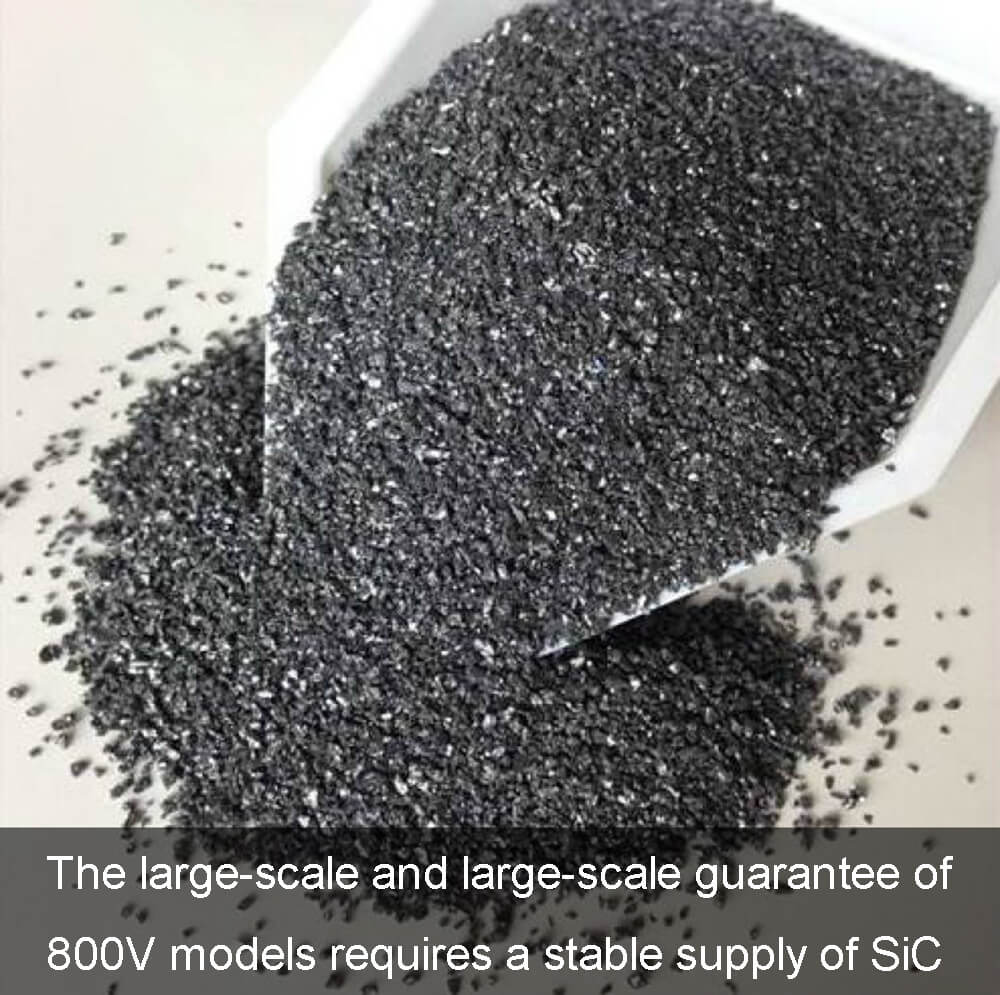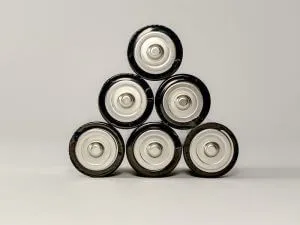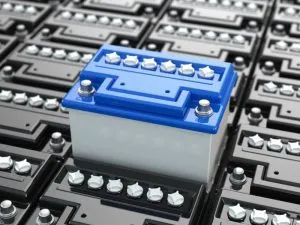800v electric drive system - opportunities and challenges
The vice president of General Motors once said: “Electric vehicle users are seeking longer range, and silicon carbide is regarded as an important material in power electronic design.”
The rise of silicon carbide is a perfect match for the 800V high-voltage platform system of electric vehicles. Under the hot trend of 800V high-voltage platforms, it is predicted that SiC power components will enter a rapid explosion stage with the large-scale deployment of 800V platforms in the next few years.

Why do electric vehicles need 800V
Whether it is Top 10 power battery companies or car owners, the effect of “charging for 5 minutes and lasting 200km” is a dream. In order to achieve this effect, two major problems must be solved:
First, it is to greatly improve the charging performance and quickly increase the charging speed of the battery
Second, it is to improve the operating efficiency of the whole vehicle and extend the driving mileage under the same amount of electricity.
Here, we can simply understand it with junior high school physics: P=UI. So if you want to increase the power, there are two ways to increase the current or increase the voltage.
The high current will lead to high heat loss of the charging gun, cable and core components of the power battery, and the theoretical upper limit is not large. Therefore, increasing the current is not a good solution.
So, what about raising the voltage?
When the system current remains unchanged, the charging power will double with the system voltage, that is, the peak charging speed will double, and the charging time will be greatly shortened. In addition, under the same charging power, when the voltage is higher, the current can be reduced, and the wire is not so thick, and the resistance thermal energy consumption of the wire is also reduced.
Therefore, the charging power can be increased if the same charging wire size used for the original 400V is also used. This means that under the 800V platform, thinner charging wires can be used.
The 800V high-voltage mode fast charge supports 30%-80% SOC maximum power charging, while the low-voltage high-current mode can only perform maximum power charging at 10%-20% SOC, and the charging power drops very rapidly in other areas. It can be seen that the 800V high-voltage mode can support faster charging for a longer time.
The higher operating efficiency of the vehicle means that when the current remains unchanged, the higher the battery voltage, the greater the power of the motor, and the higher the efficiency of the motor drive.
Therefore, the 800V high-voltage platform is easy to achieve high power and high torque, as well as better acceleration performance. Although it is said that the improvement of energy supplementation efficiency brought by 800V to electric vehicles is qualitative, one of the biggest obstacles to the promotion of 800V is cost.
Why is it a cost issue
We can push from the back to the front. If the electric vehicle architecture is upgraded to 800V, then the standard of its high-voltage components will be raised accordingly, and the inverter will also be replaced from traditional IGBT devices to SiC material MOSFET devices. The cost of the inverter itself is second only to the components of the battery. If it is upgraded to SiC, the cost will be raised by another level.
However, for OEMs, the application of silicon carbide generally does not only consider the cost of power devices, but more importantly, consider changes in the cost of the entire vehicle. Therefore, it is very important to find the balance between “cost savings brought by SiC” and “its own high cost”.
When it comes to SiC, the first to try is Tesla.
In 2018, Tesla replaced the IGBT module with a silicon carbide module for the first time in the Model 3. At the same power level, the package size of silicon carbide modules is significantly smaller than that of silicon modules, and switching losses are reduced by 75%. Moreover, after conversion, the system efficiency can be improved by about 5% by using SiC modules instead of IGBT modules.
From the cost side, the replacement cost has risen by nearly 1500RMB. However, due to the improvement of the efficiency of the whole vehicle, the installed capacity of the battery has decreased, and the cost of the battery end has been saved.
This is a big gamble by Tesla, which has flattened the cost due to its huge market sales. Tesla also took the lead in occupying the technology and market of 400V battery systems with this gamble.
What changes will the 800V platform bring
In terms of 800V, Porsche, as the first person to eat crabs, installed the 800V system in the all-electric Taycan sports car launched in 2019, setting off a wave of arms race for the 800V high-voltage architecture of electric vehicles.
Analyzing the cost from the Porsche side is quite inappropriate. After all, they focus on the luxury car effect and pay attention to a brand premium.
But in the development and application of technology, this is a big project that affects the whole car accessories. For example, under 800V high-voltage charging, the voltage of the battery pack should also be relatively raised to 800V, otherwise it will be burned due to high charging current. This needs to take into account which battery has the most voltage.
In addition, it involves not only the charging system, but also the battery system, electric drive system, high-voltage accessories and wiring harness system, which affect the starting, driving, and use of air conditioners of the vehicle.
The original Taycan did not come up with a voltage platform composed entirely of 800V electrical appliances. Porsche could not find an air conditioner compressor with an 800V working voltage, but integrated two high-voltage systems of 400V and 800V through a DCDC converter. And some compromises and concessions have been made in the fast charging speed of the battery.
The chicken or the egg – which came first
At the landing level, for OEMs, launching a product with a high-voltage platform without supporting infrastructure will still make users face the problem of charging difficulties.
The problem of “the chicken or the egg” has also evolved into the problem of “the car waits for the pile” or “the pile waits for the car”.
Under the background of 800V, the existing charging piles should be upgraded. Compared with the previous ordinary charging piles, the cost of 800V high-power charging piles has at least doubled, or even reached 2 to 3 times.
For low-end models, the distribution of 800V high-power charging piles on-board will greatly reduce their price competitiveness.
Secondly, the extremely high charging power is a huge challenge to the power grid. Whether it can be promoted on a large scale also depends on the infrastructure capacity of the power grid.
However, for China’s charging pile operators, high-power fast charging can also help improve profitability. When car companies scramble to deploy 800V technical architecture, the number of high-voltage and high-power charging piles adapted to it will also increase in parallel.
In addition, some car companies have also launched the laying of their charging piles, which is the so-called self-operated overcharge.
For example, Tesla’s supercharger network, Xiaopeng Motors also proposed a plan to build its own 480kW high-voltage supercharger, and innovatively combined 800V fast charging and energy storage systems.
In order to turn 800V products from concept into reality, practical problems in infrastructure such as high-power charging piles and power grid infrastructure capabilities need to be solved. Another solution for charging is to exchange the battery, but the battery swapping station business model in many countries is not yet mature.
Conclusion
In addition, the shortage of batteries will also have a certain impact. The large-scale and large-scale guarantee of 800V models requires a stable supply of SiC. The application of silicon carbide needs to consider technology upgrades and market effects, and will not complete the replacement of silicon-based IGBTs in a short time.
But with the advent of 800V, it’s not just inverters. Vehicle chargers, DC/DC converters and charging piles also have strong demand for SiC. The SiC device market is expected to grow from a US dollar business of 1 billion US dollars in 2021 to more than 6 billion US dollars by 2027.
The 800V electrical architecture upgrade has a long-term trend, and SiC benefits the most. Other components are smoothly upgraded, and SiC devices are expected to emerge. Finally, with the implementation of the energy-replenishing infrastructure, the 800V high-voltage architecture is the ultimate complete body, which can truly reach the first year of 800V.

